Can you even grow vegetables in south Florida with it’s hellish like heat?
You sure can! Just like with people, vegetables enjoy the weather in South Florida during a certain time of the year. South Florida really has one extended planting period. Unlike the central and north parts of the state which have two different growing seasons.
When growing vegetables in South Florida the best time to plant is during what everybody else calls fall/winter. The most popular planting time for south Florida vegetable growing is between August and March. I’ve found it easy to grow beans, collards, peppers, sweet potatoes and tomatoes but there are plenty more vegetables that you can grow.
Easiest vegetables to grow in south Florida
The easiest vegetables to grow are the varieties that can withstand the south Florida climate. Not every type of tomato is gonna love it down here, some of them like the weather a little bit cooler. That doesn’t mean that we can’t grow tomatoes though.
we can actually grow tons of different varieties of almost any vegetable imaginable here in south Florida.
Beans
You can grow two different kinds of beans, bush beans and pole beans. Bush beans grow as a bush(Duh!) and pole beans grow as a vine. Both are great producers. choose your desired growth form based on the space you are working with. If you are growing in containers choose a bush bean, it makes life a lot easier
Florida friendly bush bean varieties: Bush Blue Lake,Contender, Roma II, provider, Cherokee wax, Pinto, Red Kidney, Black Bean, Navy, Garbanzo
Florida friendly pole bean varieties: McCaslan, Kentucky Wonder, Blue Lake
Succession plant beans, meaning you should plant more beans every other week, as your space allows, throughout the growing season. This makes sure that you will always have fresh beans to pick.
Beans are a nitrogen-fixing planting, meaning that they produce nitrogen and pump it back into the soil for themselves, and other plants to use.
This also means that beans don’t benefit from a fertilizer that is nitrogen focused. We will talk more about fertilizing later in this post.
Beans normally take about 45-70 days to mature to a harvestable size.
Harvest beans before they get too large and tough. A good general rule of thumb is to harvest before they are thicker than a pencil.
Broccoli
The broccoli heads that we eat are actually the unopened flower heads of the plant. Broccoli can withstand a bit of shade. Growing this plant in about 6 hours of sun would be perfectly fine, especially in south Florida.
Broccoli also hates warm weather, so make sure that you plant this at the correct time of year, There’s a south Florida planting calendar later in this post.
Florida friendly broccoli varieties: Early Green, Early Dividend, Green Sprouting, Waltham, Packman, De Cicco
Broccoli needs about two feet of space all the way around and can be grown in a container, raised bed or planted directly into the ground.
Broccoli takes about takes about 75-90 days until they are ready for harvest.
Harvest broccoli when the heads have matured but before they bloom into flowers, cut the head about 6 inches below the flower pods.
Cabbage
Cabbage is in the same family as broccoli but is a little more care free. Cabbage is one of the easiest vegetables to grow.
Cabbage needs about 1.5 – 2 feet of space all the way around to grow properly.
Florida friendly cabbage varieties: Wakefield, Copenhagen Market, Savoy, Red Acre
Cabbage can be harvested at anytime the head seems large enough to you. generally speaking, cabbage usually takes about 85-100 days to be fully mature and ready for harvest.
Collards
This one might have my vote for the easiest plant to grow on this list. These are very heat tolerant plants and can withstand even a light chill.
However, the cooler the weather, the sweeter the leaf.
Collards are pretty much carefree, with the occasional Aphid.
After planting them into the garden just be sure to keep them watered and they will probably be happy.
Florida friendly collard varieties: Georgia southern, Top Bunch, Vates
Collards are also part of the same family as cabbage and broccoli so be sure that you are rotating these crops, not planting them in the same spot year after year.
Eggplant
Eggplants love it in south Florida, they thrive in the climate during the “Fall/Winter” time, soaking up the sun’s warmth.
You can grow a lot more options than the standard purple eggplant that you can find in the stores.
there are the classic purple varieties but there are white egg-shaped ones, tiger striped ones, and long skinny eggplants.
Florida friendly eggplant varieties: Black beauty, Dusky, Long, Ichiban, Cloud nine
eggplants can grow very large, up to 6 feet tall and may require staking. It’s best to give the plant about 3 feet of space all the way around.
Harvest when you think the fruits are large enough and still glossy, usually around 90-115 days.
Peas
I’m particularly talking about southern peas, also known as cowpeas or field peas. These are what everybody thinks of when you say black eyed peas. There are also similar varieties with pink eyes and not eyes at all.
Just like beans they are a nitrogen fixer, pumping the soil with nitrogen for all to use.
Florida friendly pea varieties: California Blackeye No.5, Pinkeye Purple Hull, Texas Cream.
This is an easy to grow vegetable that many growers also use as a cover crop in the warmer months of the season.
to use as a cover crop, instead of letting the plant produce food, you chop it down and work into the soil when the leaves are still tender and easy to break down.
Peppers
Another plant that loves the warmth of the south Florida climate. Peppers can be sweet, mild or spicy. We have an abundance of choices when it comes to peppers.
Peppers like to soak up the sun so make sure that these guys get at least 8 hours of sun.
Florida friendly sweet pepper varieties: California wonder, Red Knight, Big Bertha, Sweet Banana, Giant Marconi, Cubanelle
Florida friendly hot pepper varieties: Early Jalapeno, Cherry Bomb, Hungarian Hot Wax, Big Chile II, Mariachi, Numex, Ancho, Thai, Anaheim Chile, Long Cayenne, Habanero, Caribbean Red Habanero
Since we can grow such a wide variety of peppers it’s hard to say how much space you will have to give your peppers. The seed package should say, some peppers only need about 2 feet while others can grow large and need up to 4 feet of space.
Harvest when the peppers look big enough to you. They should feel firm and crisp, usually about 60-80 days.
Radish
Radishes are a super easy fast growing vegetable. Lots of times radishes are grown along with carrots. The radish grows quickly providing shade to the baby carrots. And since the radishes grow so quickly they can be harvested before they affect the carrots growth at all. This is a great way to maximize space.
Florida friendly radish varieties: Cherry Belle, White Icicle, Sparkler, Champion, Daikon
They only take about 20-30 days to fully mature. You don’t need much space to grow these guys so they are great for containers. You can pack them tight, planting them 2-3 inches apart should be fine.
Sweet Potato
For me they grow like a weed. I’ve planted them one time. Year after year I’ve gotten milk crate after milk crate full of them. I litterally dson’t do anything to them.
On second thought, these guys might be easier to grow than collards.
Florida friendly sweet potato varieties: Beauregard, Hernandez, Picodito
These potatoes need space to grow, plant them about 2 feet apart from each other. They grow as a vine, across the ground and will crawl to fill in all available space.
they do take up a bit of space but you can always design your garden so that this guy works with other plants that can use its low growth pattern to their advantage.
You can also eat the green leaves that sweet potatoes produce. The leaves are nutrient dense but a little bit bitter.
Sweet potatoes need about 80-130 days until they are ready to harvest.
Squash
There are so many different kinds of squash but they can be broken down into three categories.
Summer squash, Winter squash, and zucchini.
Don’t let the names confuse you, summer squash doesn’t really grow in the summer heat here in Florida.
Florida friendly Summer squash varieties: Early Prolific, Straightneck, Crookneck, Early White Scallop, Chayote
Florida friendly zucchini varieties: Cocozelle, Spineless Beauty, Black Beauty, Chayote, Calabaza
Florida Friendly Winter squash varieties: Spaghetti, Table King, Table Queen, Waltham, Early Butternut
Squash plants normally take up large spaces. Summer squash and Zucchini grow like a bush while winter squash normally grows as a vine.
Summer/zucchini squashes need around 2-3 feet of space but winter squash plants need much more. They will sprawl out to taking up to 6- feet of space all the way around. Summer squash harvest quickly, usually within 40-50 days while winter squash take longer to mature, usually around 85-120 days.
Tomato
The one vegetable that everybody thinks about when you say gardening. Tomatoes are a staple in the vegetable garden and for good reason. We can grow a lot of different kinds of tomatoes in South Florida.
The easiest tomato I have ever grown is the ‘Everglades” variety. This thing grows like a weed.
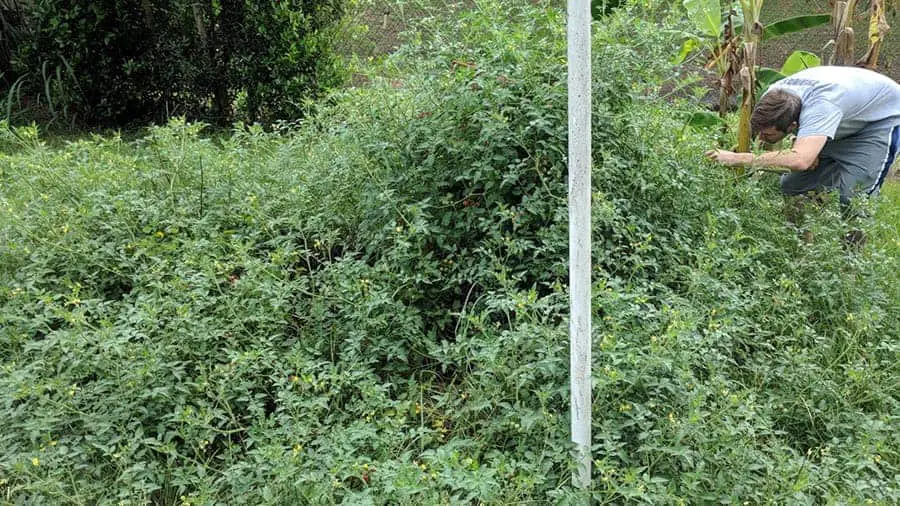
If you keep up on fertilizing and pest care this thing will just keep growing. That thing is like 6 feet tall and 8 feet wide. There are two different types of tomato, Determinate and indeterminate.
An indeterminate type of tomato, like the everglades variety, will just continue to grow and not stop at a determined size.
A determinate tomato will have a pre-set size that you know it will grow to and then stop. This makes garden planing a little bit easier.
You can also break tomatoes down by the size of fruit that they produce.
For instance, an Everglades tomato is a small dime sized tomato great for salads and beefsteak tomatoes are large and great for sandwiches!
- Indeterminate (Large Fruit): Better Boy, Bonnie’s Best, Striped Cavern
- Indeterminate (Small Fruit): Everglades(summer friendly), Husky Cherry, Sweet 100(Summer friendly),
- Determinate(Large Fruit): Celebrity, Tasti-Lee
- Determinate(Small Fruit): Floragold
South Florida planting calendar
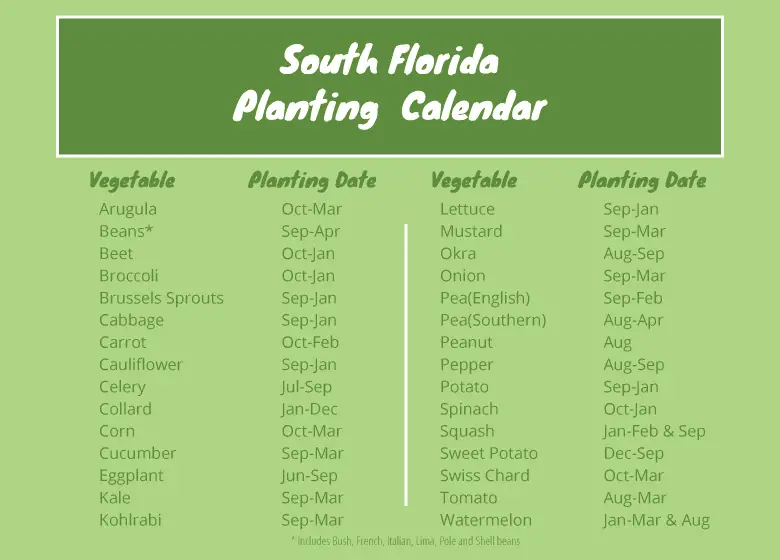
Best soil for gardening
Most of Florida’s soil is sandy but that doesn’t mean we can’t grow vegetables in it. If you plan on planting directly into the ground I would definitely add something to the dirt.
I’ve had really good luck building my soil with these this mixture.
- ½ peat moss or coco coir(Peat moss is cheaper but it’s farming practice isn’t sustainable)
- ½ compost
- Worm castings for fertilizer
- Fungi additive to create an internet of nutrients, making them easily available to your plants.
If you mix these things into the ground or even fill your raised bed with this mixture I think you are giving yourself a good start.
The easiest, most beneficial thing you can do for your soil is to mulch it. Mulching is the easiest way to help your garden retain moisture and build structure over time.
Mulch can be any organic material. yard waste is a great mulch, I know your neighbors probably have some cut palm fronds or trimmings from bushes that they wouldn’t mind you taking. If you continue to add mulch and other compost layer after layer you will build a rich, natural soil, quicker than you probably thought.
Best location for my garden?
The best location for your garden is where it’s going to get the most sun. Veggies really need 6-8 hours of sun.
It’s important to pay attention to how the sun moves. I might be weird but I never really paid attention to how much the sun’s position in the sky changes until I started gardening.
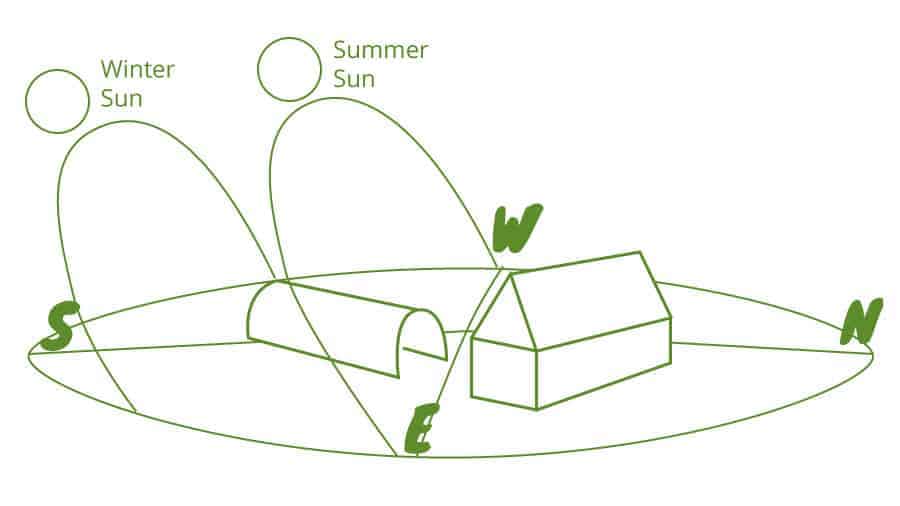
Observe the space you’re working with and see where the sun lands.
If you have lots of space with 6-8 hours of sun, choose the spot that’s closest to a water source. The further away your garden is from water, the less likely you are to water it. That’s just what I’ve experienced. I’m kind of a lazy gardener though, it could just be that kicking in.
You can also orient your garden however you would like. North to south or East to West.
Gardens oriented north to south do get more even sun exposure but that’s not the end of the world. When you plan your garden layout you should always take your plants size into consideration.
Common south Florida vegetable garden pests
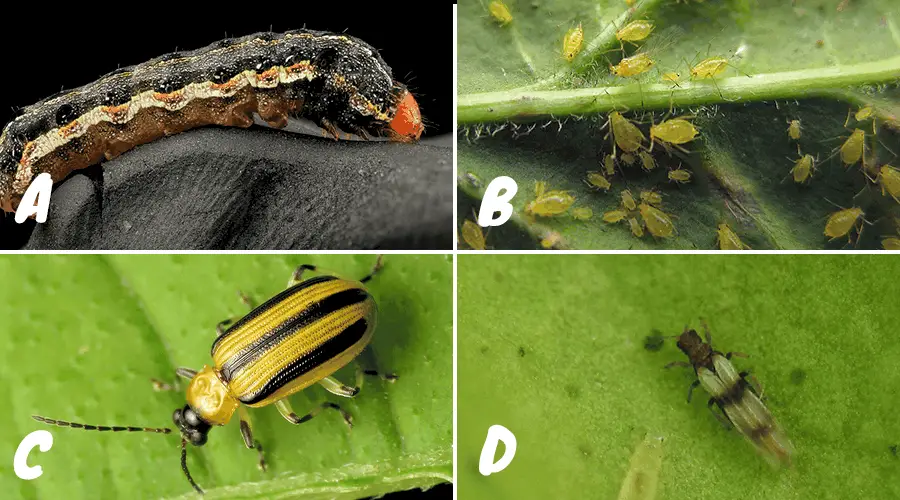
Aphids
Small, round, Yellow-greenish bugs that live on the underside of your leaves. They usually group together and are easy to spot when looking over your plant. They secret a sweet honeydew that ants love, so lots of times you will also find ants crawling on your plants when you have an aphid problem. These ants are actually farming the aphids, taking care of them so that they can have their sweet honeydew. Aphids hurt your plants by taking their little pointy mouths and sucking it’s life juices out. They can pass along viruses and diseases by doing that as well.
Aphid control:Aphids are removed easily by a strong stream of water. You can also use an insecticidal soap or neem oil(Check price on Amazon) for an easy organic control method which also handles lots of other pests as well.
Caterpillars
There are lots of different kinds of worms that attack your plants. The armyworm, cabbage looper, fruitworm, and hornworm.
But they all mess your plant up the same way. They chew it to bits. They will eat the green leafy plant growth and the fruits.
Caterpillar control: Some of the caterpillars are good at camouflaging themselves, just follow the trail of damage that they leave behind and you will find them. They are easy to hand pick off if you want. B.t.(Check price on Amazon) is an organic control method that you can spray on your plants to kill caterpillars.
Beetles
There are lots of different kinds of beetle that attack your plants. The most common one in my experience is the cucumber beetle, they can either be striped or spotted. all beetles though usually damage your plant by eating holes in your leaves and spreading disease and virus.
Beetle control: There are no organic sprays that I know of to control these guys. If you know of one please let me know. The best way that I’ve found to control them is by removing them by hand, spraying them off with a strong stream of water, or using row covers to prevent them from reaching your plant.
Stink bugs
Stink bugs have shield shaped bodies and legs like leaf footed bugs. These bugs are usually wither brown or green.
They eat your fruits with their piercing mouth parts. They aren’t big ewnough to take chunks out of your fruits but they do spread viruses this way.
Stink bug control: Removing by hand or spraying them off is an option, but neem oil also takes care of these guys as well.
Thrips
Thrips are slender flying bugs that suck on your plants life juices. You can find the small winged creatures crawling around on your plant and usually make your leaves pale and splotchy in the spots that they’ve eaten.
Thrip control: Spraying them off of your plant is an option but neem oil(Check price on Amazon) also takes care of these guys too.
A healthy garden is the best pest control you can have. Most of the time if your garden is planned out great, and you take care of it regullarly you can beat the pests. Having lots of bugs in your garden is actually a good thing. There are just as many good bugs as there are bad bugs, probably even more. All of these common pests also have predators. Attracting lots of insect life with herbs and other flowers is a great way to help your garden out.
Common south Florida vegetable garden diseases
Lots of times diseases are hard to identify. Usually they are caused by poor garden care. By letting pests get out of hand, not picking weeds or fertilizing you are giving the upper hand to the pests and diseases. If you give your garden a healthy environment to grow up in, you most likely won’t have to worry about this problem. But some of the common diseases that cause issues in south Florida are mildew and leaf/fruit spot.
Mildew is one that is actually pretty easy to spot, it’s common on squash and controlled by a simple copper fungicide.(Check price on Amazon)
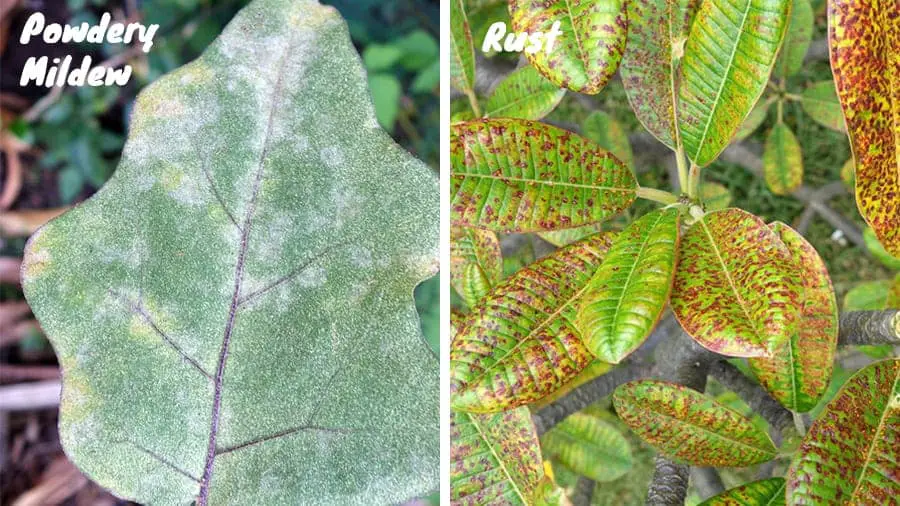
Fertilizing your garden
Whenever you see a fertilizer bag you usually see 3 numbers on there. Those numbers represent the amount of Nitrogen(N), Phosphorous(P) and Potassium(K) that the fertilizer contains. Usually there are more nutrients in there than those three but those are the major ones.
Plants use each nutrient a little bit differently. Nitrogen helps the plant grow green leafy growth, phosphorous helps the roots and stimulates flower and fruit production. Potassium is a good overall health booster for your plant.
Choose your fertilize based on what you are growing. If you have a garden full of leafy greens, things like lettuce, collards and kale. You should get a nitrogen focused fertilizer.(Check price on Amazon)
If you are growing fruit producing plants, a fertilizer with a little bit more phosphorus and potassium would be beneficial. I’ve used this one(Check price on Amazon) and have had good results.
Easiest vegetables to grow in South Florida
- Beans
- Broccoli
- Cabbage
- Collards
- Eggplant
- Peas
- Peppers
- Radish
- Sweet potato
- Squash
- Tomato
Check out: Florida Garden Layouts for tips on veggie garden design
